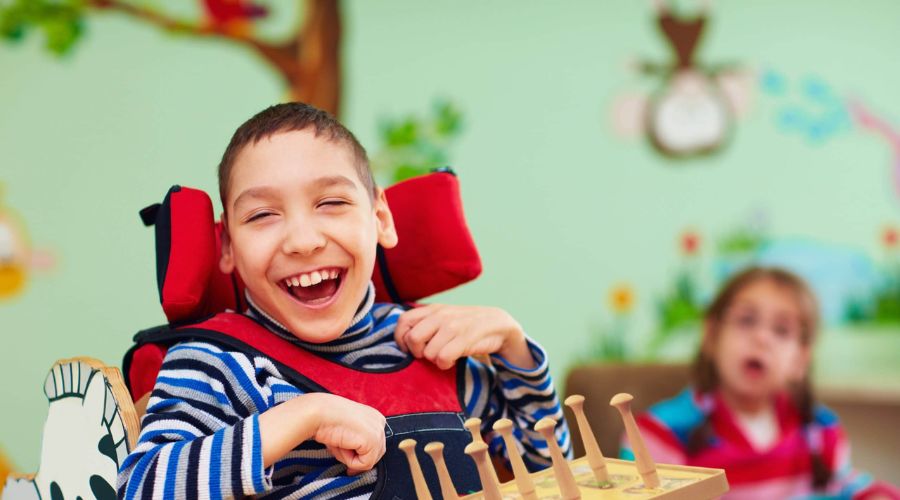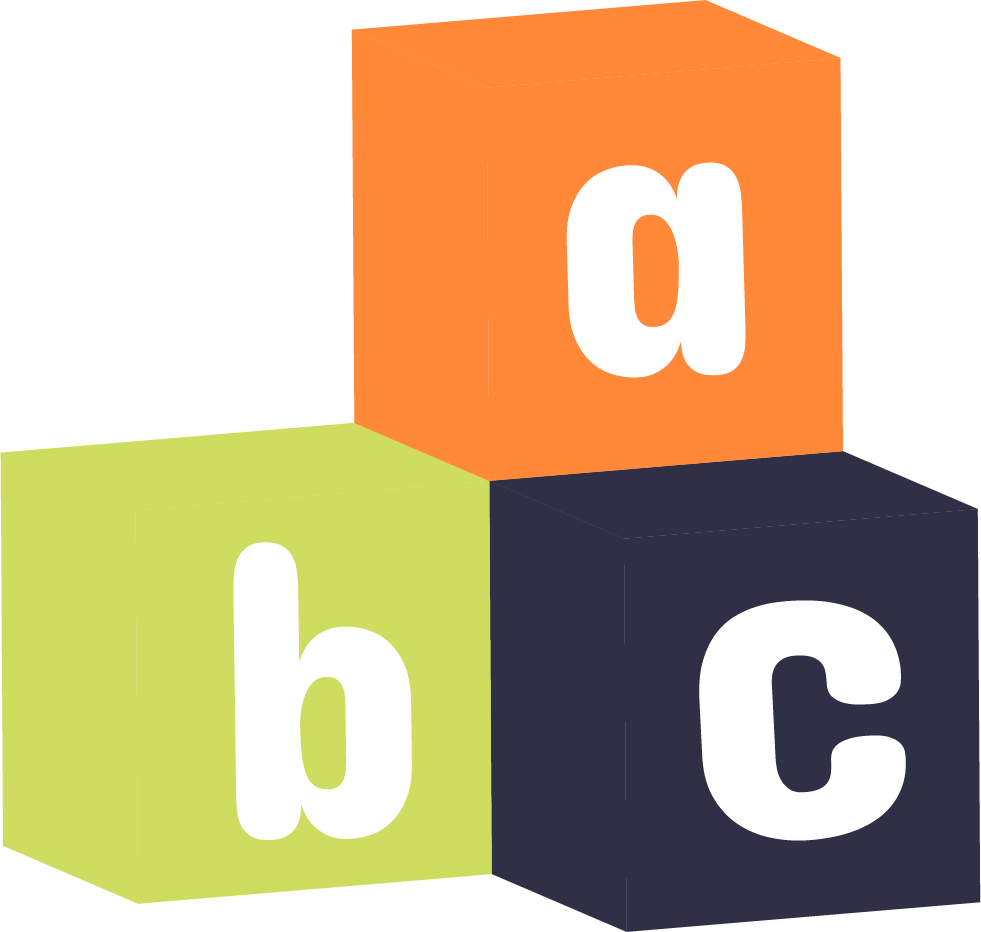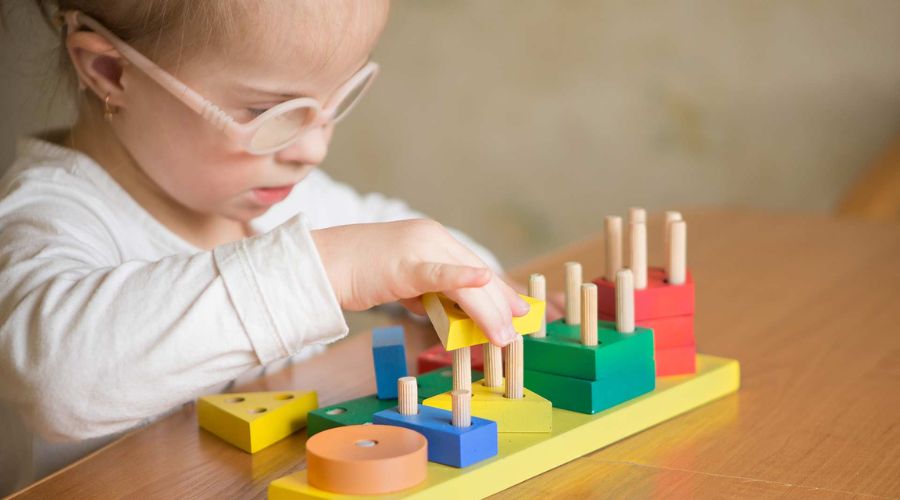Educational toys for children with disabilities
Children with disabilities often face unique challenges in their daily lives, and providing them with appropriate educational tools is crucial for their development. One avenue that has gained recognition in recent years is the use of adapted toys. These specially designed toys serve as valuable tools to enhance the learning experiences of children with disabilities. In this article, we will explore what adapted toys are, why they are necessary for children with disabilities, the different types available, and provide examples of simple adapted toys.
What are Adapted Toys?
Adapted toys are modified or specially designed toys that cater to the unique needs and abilities of children with disabilities. These modifications can include changes to the toy’s physical structure, sensory elements, or control mechanisms to ensure that children with various disabilities can engage with them effectively. The goal of adapted toys is to promote learning, play, and overall development in a way that is accessible and enjoyable for every child, regardless of their abilities.

Why are Adapted Toys for Children with Disabilities Necessary?
In 1959, the United Nations General Assembly acknowledged play as one of the fundamental rights of a child. Engaging in play allows children to comprehend their surroundings, establish connections with others, and explore their capabilities, thereby fostering growth and development.
However, the enjoyment of play can pose a significant challenge without appropriate tools. Numerous children with disabilities lack access to toys tailored to their specific needs. It is imperative to provide these children with adapted toys that adhere to particular criteria, thereby contributing to the creation of an inclusive society. In such a society, all children, regardless of their abilities, can partake in playtime, sharing toys in a manner that ensures equal opportunities and seamless integration.
Simultaneously, the production of toys designed for children with special needs reflects a positive and forward-thinking commitment from manufacturers. This commitment plays a crucial role in the construction of a genuinely accessible society, emphasizing the importance of inclusivity for all children, with or without disabilities, to enjoy toys and playtime on an equal footing.
>>> The World of Adaptive educational playthings for disabled children

Inclusive Learning Environments:
The integration of adapted toys is paramount in cultivating inclusive learning environments. Offering children with disabilities access to toys that align with their capabilities allows educators and parents to establish an inclusive atmosphere, ensuring every child’s participation in both play and learning activities. This inclusivity plays a pivotal role in nurturing a sense of belonging and bolstering self-esteem among children with disabilities.
Cognitive Development:
Recognizing the potency of toys as instruments for cognitive development in children, adapted toys emerge as tailored tools that address specific cognitive needs. Children with disabilities can engage in activities that stimulate their cognitive abilities, leading to enhancements in problem-solving skills, spatial awareness, and overall cognitive development. The customized nature of adapted toys ensures a targeted approach to cognitive stimulation, facilitating a more comprehensive and effective learning experience.
Motor Skills Development:
Children with disabilities often encounter obstacles in developing fine and gross motor skills. The design of adapted toys can be strategically oriented to provide support and encouragement for the development of these skills. By presenting opportunities for children to manipulate and interact with toys accommodating their motor abilities, adapted toys become instrumental contributors to physical development. This focus on motor skills not only fosters physical well-being but also contributes to improved coordination and motor proficiency.
Sensory Stimulation:
Given the unique sensory preferences and sensitivities of children with disabilities, adapted toys offer modified features to provide appropriate sensory stimulation. These modifications can encompass adjustments to the texture, sound, or visual elements of the toy, tailoring the sensory experience to meet the specific needs of each child. The result is a more comfortable and enjoyable sensory environment, fostering engagement and exploration in a manner that aligns with the sensory profiles of children with disabilities.
>>> Exploring the World of Sensory toys for visually impaired children
Types of Adapted Toys:
Switch-Adapted Toys:
Switch-adapted toys are a groundbreaking solution designed to empower children with limited motor control, allowing them to engage with toys that might otherwise be challenging. These toys undergo modifications to integrate external switches, offering alternative methods of interaction. The adaptability of these switches is a key feature, as they can be customized to align with the unique abilities of each child. Whether using buttons, touch-sensitive pads, or other accessible mechanisms, the switches provide children with the means to control and activate the toy.
One significant advantage of switch-adapted toys lies in their versatility. These toys serve as valuable tools for the development of cause-and-effect relationships. Through the act of pressing a switch and observing the corresponding response from the toy, children can enhance their cognitive abilities. Additionally, the interaction with switch-adapted toys promotes the refinement of motor skills, as children learn to coordinate their actions to achieve specific outcomes. This integration of adapted toys into play not only facilitates enjoyment but also becomes an essential component of cognitive and motor skill development for children with limited motor control.

Sensory Toys:
Sensory toys represent a tailored approach to addressing the specific sensory needs of children with disabilities. These toys are adapted to engage multiple senses simultaneously, creating a rich and stimulating experience. Textured surfaces, vibrant colors, and various sounds are common elements incorporated into sensory toys. This sensory-rich environment proves particularly beneficial for children with sensory processing disorders, helping them regulate their sensory experiences in a controlled and enjoyable manner.
The significance of sensory toys extends beyond mere entertainment. By offering a variety of sensory stimuli, these toys contribute to the development of sensory integration skills. Children can explore and engage with different textures, sounds, and visual elements, enhancing their ability to process and respond to sensory input. For children with sensory processing challenges, sensory toys serve as therapeutic tools, aiding in the development of sensory regulation and promoting a more comfortable and enjoyable play experience.
Communication Devices:
Adapted toys go beyond play and can serve as essential communication tools for children facing speech or communication difficulties. The incorporation of augmentative and alternative communication (AAC) devices into toys enables children to express themselves effectively. These devices may include pre-recorded messages, customizable sound effects, or even voice output systems.
The use of adapted toys as communication devices contributes significantly to the enhancement of communication skills. By engaging with these toys, children not only learn to express their needs and preferences but also develop essential social interaction and emotional expression skills. The integration of AAC devices into play creates an interactive and dynamic platform for communication, fostering both independence and confidence in children facing speech or communication challenges.
Mobility Toys:
For children with mobility impairments, adapted toys designed to encourage movement play a transformative role in their development. These toys may take the form of modified ride-on vehicles or mobile toys equipped with controls accessible to children with limited mobility. Control mechanisms such as simple gestures, switches, or joysticks offer children the ability to navigate and control the toy’s movements.
The impact of mobility toys extends beyond physical activity. By engaging with these adapted toys, children with mobility challenges develop crucial skills such as coordination, spatial awareness, and independence. The experience of controlling a mobile toy fosters a sense of agency and empowerment, allowing children to explore their surroundings and engage in activities that might otherwise be challenging. Mobility toys play a pivotal role in breaking down barriers and promoting inclusivity, enabling children with mobility impairments to actively participate in play and recreational activities.
In summary, switch-adapted toys, sensory toys, communication devices, and mobility toys represent innovative and impactful solutions for children with disabilities. These adapted toys not only provide avenues for inclusive play but also serve as instrumental tools for cognitive, sensory, and motor skill development, as well as communication and mobility enhancement. The integration of such toys into the lives of children with disabilities promotes a holistic approach to their overall well-being, fostering independence, confidence, and a sense of accomplishment.
A Few Examples of Simple Adapted Toys:
Switch-Adapted Musical Toys:
Switch-adapted musical toys present an innovative solution for children with limited motor control, offering them the joy of creating musical sounds with a simple press. These musical toys are modified to include switches, allowing children to activate various sounds or music by pressing the adapted switch. Beyond the auditory stimulation, these adapted toys serve as effective tools for introducing the concept of cause and effect.
For instance, a switch-adapted drum set can transform the experience of musical play for children facing motor challenges. With the adapted switches, children can engage in rhythmic exploration, creating delightful beats and tunes with each press. This not only provides an enjoyable musical experience but also fosters cognitive development as children begin to associate their actions with specific outcomes. Switch-adapted musical toys thus offer a dynamic and inclusive platform for children with diverse abilities to participate in the joy of making music.
Sensory Exploration Boxes:
Sensory exploration boxes are versatile and customizable containers designed to engage children in hands-on learning experiences. Filled with a variety of tactile materials such as fabrics, beads, or textured objects, these boxes are adaptable to include switches or buttons that trigger lights, sounds, or vibrations. The incorporation of these sensory elements transforms the sensory exploration box into a multi-sensory experience, catering to the unique needs of children with different disabilities.
These adapted toys are particularly beneficial for children with sensory processing disorders, offering a controlled and stimulating environment for sensory exploration. As children manipulate the contents of the box, the accompanying lights, sounds, or vibrations provide feedback, enhancing their sensory integration skills. Sensory exploration boxes encourage active participation and exploration, making them an effective tool for educators and parents seeking to create inclusive and engaging learning environments for children with diverse sensory profiles.

Communication Board with Interactive Images:
A communication board with interactive images serves as a valuable communication tool for children facing speech or communication difficulties. This adapted toy is designed to include images representing various objects or actions, each linked to a specific sound or phrase. By incorporating switches or buttons, children can express their needs or preferences by activating the pre-recorded audio associated with the corresponding image.
This adapted toy fosters the development of communication skills by providing a visual and auditory means for expression. For example, a child can press a button with a picture of a drink, triggering a pre-recorded phrase like “I want water.” This not only facilitates effective communication but also promotes language development and social interaction. The communication board with interactive images empowers children with communication difficulties, offering them a personalized and accessible platform to express themselves in a meaningful way.
In the realm of education for children with disabilities, adapted toys play a pivotal role in promoting inclusivity, development, and engagement. These specially designed toys address the unique needs of children with various disabilities, fostering cognitive, motor, and sensory development. As educators, parents, and society at large recognize the importance of inclusivity, the demand for adapted toys continues to grow, driving innovation in the field.
By investing in adapted toys, we invest in the potential of every child, regardless of their abilities. As technology advances and awareness increases, the landscape of adapted toys will likely expand, offering even more tailored solutions for children with disabilities. As we move forward, it is essential to champion inclusivity, celebrate diversity, and provide every child with the tools they need to unlock their full potential in the world of education.

